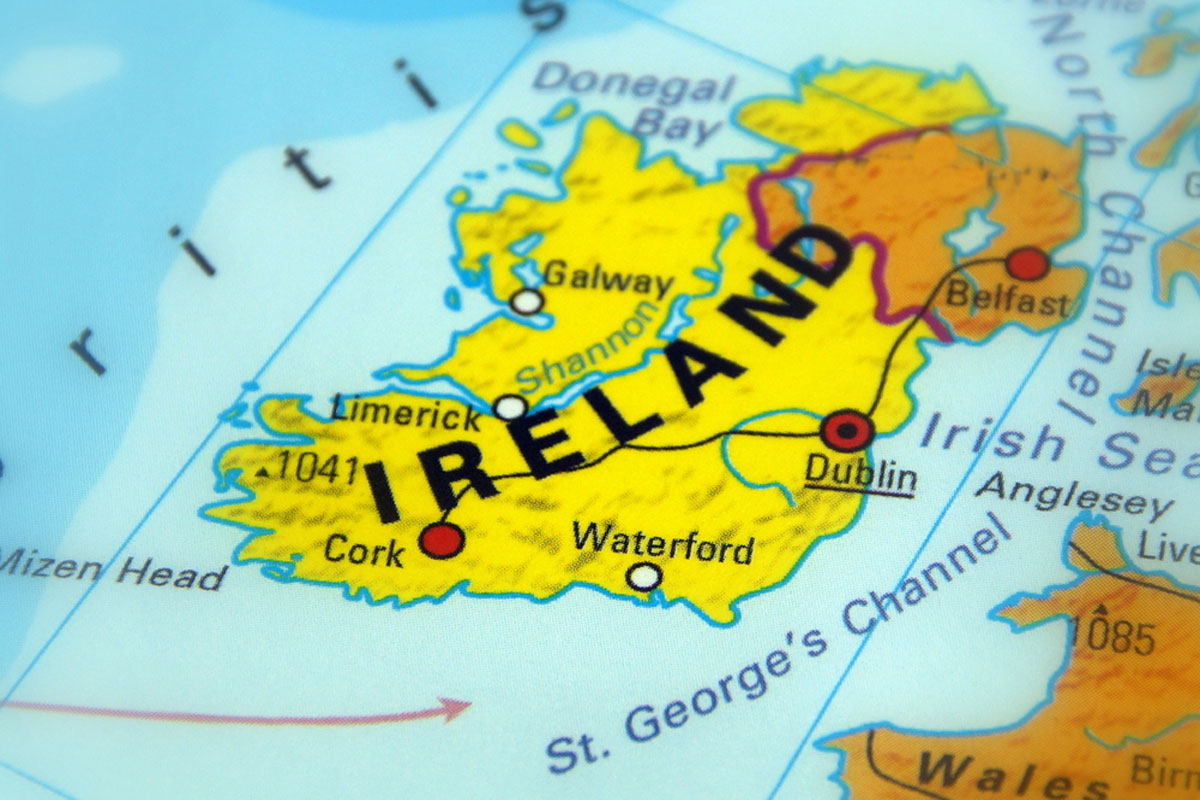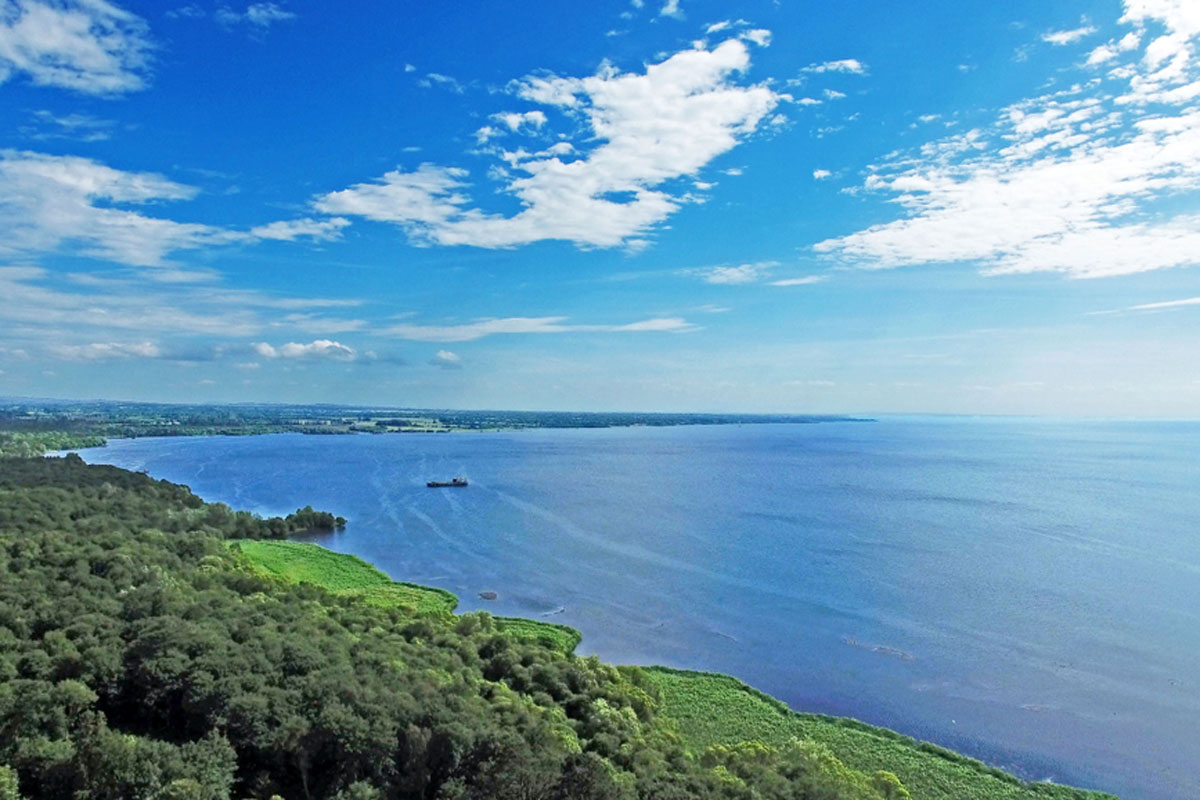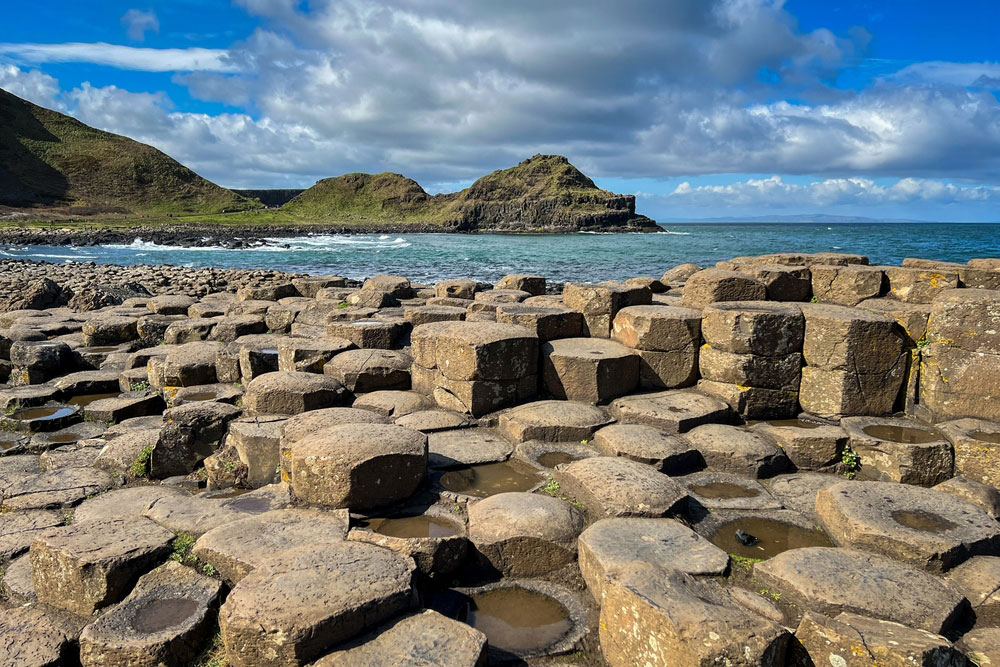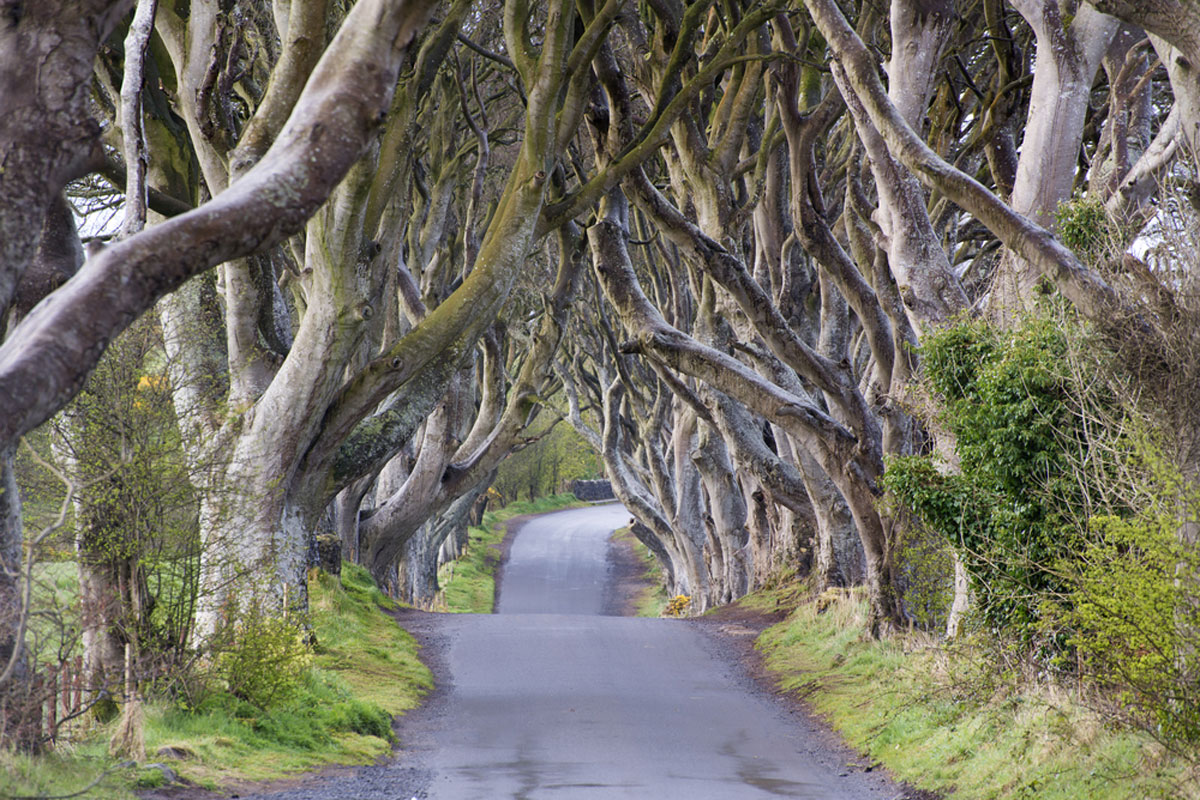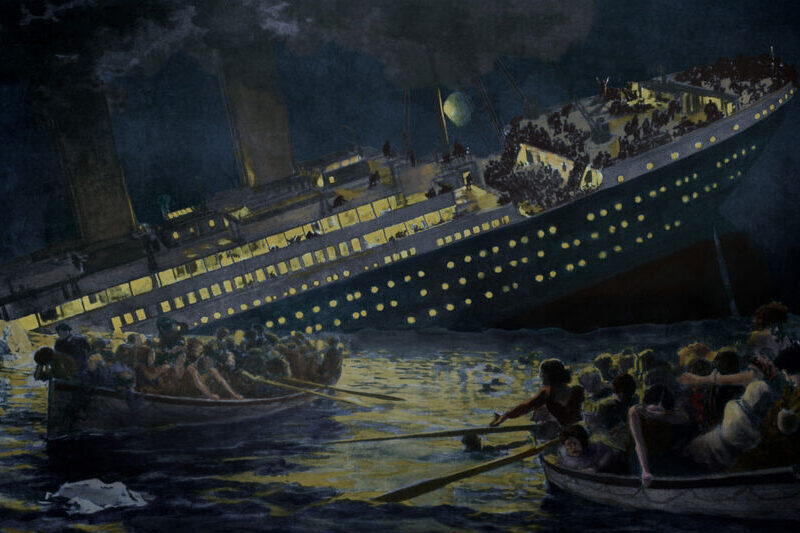An Introduction to Kilkenny – A Medieval Marvel of Ireland
Kilkenny, often referred to as “The Marble City,” is a place where Ireland’s medieval past is still vividly alive, with its cobbled streets, historic buildings, and rich heritage. Nestled in the heart of Ireland’s Ancient East, Kilkenny offers visitors a unique blend of old-world charm and modern cultural vibrancy.
Kilkenny’s History and Legacy
Kilkenny traces its roots back to the 6th century when it was a religious settlement, founded by Saint Canice. The city began to thrive in the Norman period (12th century) when it developed into a bustling hub of trade, politics, and religion. By the 13th century, Kilkenny had become one of Ireland’s most important cities, earning the status of a medieval capital with impressive castles, abbeys, and a fortified townscape.
Kilkenny’s name originates from the Irish “Cill Chainnigh,” meaning “Church of Canice,” in honor of the saint who established his monastery here. The Normans later built upon this heritage, constructing the stone churches, fortifications, and landmarks that still stand today.
The Marble City: Why It’s Called That
Kilkenny is famously referred to as the “Marble City,” though this moniker is slightly misleading. The black stone used extensively in the city’s construction is not marble but polished limestone. Quarried locally, this dark stone gives the city its distinctive architectural look and has been used in everything from churches and castles to pavements and monuments. The name “Marble City” has stuck, a nod to the shimmering beauty of this unique stone in the Irish landscape.
Visitors can still see this limestone in many of the city’s iconic buildings, lending Kilkenny a rich, historic feel that is unmatched elsewhere in Ireland.
Kilkenny’s Medieval Layout
One of Kilkenny’s most striking features is its well-preserved medieval street plan. The city’s streets wind through narrow passageways, lined with stone-fronted buildings, many dating back to the 16th and 17th centuries. Walking through Kilkenny feels like stepping back in time, with landmarks such as Kilkenny Castle, St. Canice’s Cathedral, and the Rothe House creating a medieval atmosphere.
The city is also home to “The Parade,” a grand, open boulevard running from Kilkenny Castle down to the River Nore, providing a central space for gatherings, markets, and festivals, much like it would have centuries ago.
Cultural Vibrancy Amidst History
While Kilkenny is steeped in history, it’s also a vibrant cultural center, known for its festivals, art galleries, and thriving music scene. The city is famous for hosting the annual Kilkenny Arts Festival, which attracts artists, musicians, and performers from around the world. The fusion of medieval heritage with contemporary creativity makes Kilkenny a dynamic place to visit, where the old and new blend seamlessly.
Why Kilkenny Should Be on Your Travel List
Kilkenny offers something for every traveler, whether you’re a history enthusiast, an art lover, or simply someone who enjoys wandering through charming old streets. Its fascinating past, stunning architecture, and vibrant present make it a must-see destination for anyone looking to explore Ireland’s medieval history. From ancient castles and churches to modern galleries and craft shops, Kilkenny is a city that captivates and delights at every turn.
Kilkenny Castle – A Fortress Through the Ages
In the heart of Kilkenny lies its most iconic structure: Kilkenny Castle, a majestic fortress that has watched over the city for more than 800 years. This 12th-century castle has transformed from a defensive stronghold into a symbol of Kilkenny’s enduring history and is now one of Ireland’s most popular tourist attractions.
The Origins of Kilkenny Castle
Kilkenny Castle was originally built in 1195 by the Anglo-Norman leader William Marshal, the Earl of Pembroke, to control a vital crossing of the River Nore and to solidify Norman rule in the region. As the Normans expanded their influence in Ireland, they needed strongholds like Kilkenny Castle to maintain power and secure their territories. The castle became the administrative and military hub of the area, providing a base for the Normans and serving as a symbol of their dominance.
Built as a square-shaped fortress, Kilkenny Castle originally had four circular corner towers and a massive gatehouse. Over the centuries, the castle evolved, with various architectural styles and renovations reflecting the changing tastes and needs of its owners.
The Butler Family Legacy
The castle’s most significant era began in 1391 when it was purchased by James Butler, the 3rd Earl of Ormond. The Butlers were one of the most powerful families in Ireland and would hold the castle for almost 600 years, transforming it into their luxurious residence and the political center of their vast estate.
Under the Butlers, Kilkenny Castle became not only a defensive structure but also a symbol of wealth, prestige, and political influence. The family hosted grand banquets, entertained royalty, and played key roles in Irish and English politics. The Butlers’ influence on the castle can still be seen in its lavish interiors, gardens, and art collections, which reflect their status as one of Ireland’s premier noble families.
Architectural Evolution
Kilkenny Castle’s architecture showcases the evolving styles from its medieval origins to its later transformation into a grand family home. Originally designed as a fortified Norman castle, it featured thick stone walls, battlements, and a central keep. Over time, however, the castle underwent significant changes.
In the 17th and 18th centuries, the Butlers added large windows, softened the defensive appearance, and enhanced the castle’s grandeur, making it a comfortable residence. The Victorian era brought further renovations, including Gothic revival elements and the construction of the grand long gallery, which houses portraits of the Butler family and a magnificent painted ceiling.
Today, visitors can explore the castle’s blend of medieval and Victorian architecture, wandering through rooms filled with antique furniture, artwork, and tapestries that tell the story of the castle’s long and colorful past.
The Gardens and Parklands
Beyond the castle itself, Kilkenny Castle is surrounded by beautiful parklands and formal gardens that provide a peaceful retreat for visitors. The castle grounds were developed in the 19th century when the Butlers transformed the surrounding area into meticulously manicured gardens, reflecting the Victorian passion for horticulture.
The Rose Garden, located just outside the castle’s walls, is a highlight, with its perfectly trimmed hedges and vibrant flowers providing a picturesque view of the castle. The Woodland Walks and sprawling lawns of the Castle Park invite visitors to enjoy a leisurely stroll through 50 acres of green space, offering stunning views of the castle from every angle.
The park is a popular spot for both locals and tourists, with many enjoying picnics, outdoor activities, and the serenity of the River Nore, which flows gracefully beside the castle.
Kilkenny Castle in Modern Times
After centuries as the residence of the Butler family, Kilkenny Castle was sold to the people of Kilkenny in 1967 for a symbolic sum of £50. Following extensive restoration work, the castle was opened to the public and is now managed by the Office of Public Works (OPW).
Kilkenny Castle has since become one of Ireland’s most visited heritage sites, attracting history enthusiasts, architecture lovers, and tourists from around the world. Its grand rooms, historical exhibitions, and guided tours provide a fascinating insight into Ireland’s medieval and aristocratic history.
The castle also hosts cultural events, exhibitions, and art shows throughout the year, ensuring that Kilkenny Castle remains a living monument to Ireland’s rich cultural heritage.
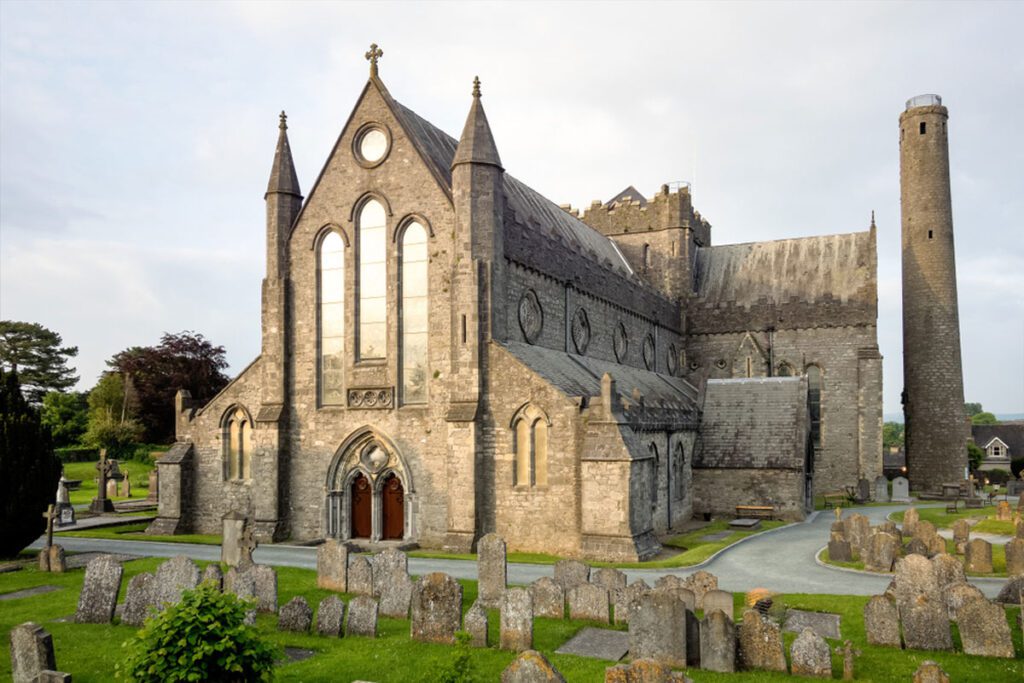
Strolling Through Kilkenny’s Medieval Streets
Kilkenny is a city where the past is ever-present, with its labyrinth of narrow lanes, historic buildings, and timeless atmosphere. Let’s take a stroll through Kilkenny’s medieval streets, highlighting the key landmarks and hidden gems that give the city its unique charm. From merchant houses to ancient churches, Kilkenny offers an immersive experience of Ireland’s medieval past.
The Medieval Mile
At the heart of Kilkenny lies the Medieval Mile, a stretch of cobblestone streets running between Kilkenny Castle and St. Canice’s Cathedral. This historic mile encompasses many of the city’s most important medieval landmarks, making it a perfect route for anyone interested in discovering Kilkenny’s heritage.
The Medieval Mile is not just a path through the city but a journey back in time, where the past and present coexist. As you walk along the streets, you’ll pass centuries-old buildings that now house modern shops, cafes, and galleries, blending the old with the new in a delightful way.
Rothe House: A Glimpse into Merchant Life
One of the standout stops along the Medieval Mile is Rothe House, a 17th-century merchant townhouse and one of the finest examples of a Renaissance home in Ireland. Built in 1594 by John Rothe, a wealthy merchant and politician, the house is a beautifully preserved relic of Kilkenny’s prosperous past.
Rothe House consists of three buildings, each with a courtyard garden, reflecting the wealth and status of the Rothe family. Today, it serves as a museum, offering visitors a glimpse into life during the Tudor and Jacobean periods. Inside, you’ll find an impressive collection of artifacts, including medieval costumes, weaponry, and household items, giving you a taste of what life was like for Kilkenny’s elite merchants.
The house also features a walled garden, which has been restored to reflect the types of plants and herbs that would have been grown in the 17th century.
St. Canice’s Cathedral and Round Tower
At the northern end of the Medieval Mile, you’ll find one of Kilkenny’s most significant religious sites: St. Canice’s Cathedral. Dating back to the 13th century, this stunning Gothic cathedral is built on the site of a 6th-century monastic settlement founded by St. Canice himself.
St. Canice’s Cathedral is an architectural masterpiece, with its intricate stone carvings, stained glass windows, and imposing spire that dominates Kilkenny’s skyline. Inside, visitors can admire ancient tombs and monuments dedicated to the city’s influential families, including the Butlers of Kilkenny Castle.
Next to the cathedral stands St. Canice’s Round Tower, one of only two accessible round towers in Ireland. Built during the 9th century, the tower once served as a place of refuge during Viking raids. Today, visitors can climb to the top for breathtaking panoramic views of Kilkenny and the surrounding countryside.
The Black Abbey
Another must-see on Kilkenny’s medieval map is The Black Abbey, a Dominican friary founded in 1225. Despite suffering destruction during the Reformation and Cromwellian invasions, the abbey has been remarkably restored and continues to serve as a place of worship.
The Black Abbey is named for the black robes worn by the Dominican friars, and its history reflects Kilkenny’s religious and political struggles. Inside, you’ll find stunning stained glass windows, particularly the famous Rosary Window, one of the largest and most intricate stained glass works in Ireland.
The abbey’s serene atmosphere, combined with its striking medieval architecture, makes it a peaceful stop along your tour of Kilkenny’s medieval landmarks.
Kyteler’s Inn and Kilkenny’s Witch Trials
No medieval city tour would be complete without a story of intrigue, and Kilkenny offers just that with Kyteler’s Inn. This historic pub was once the home of Dame Alice Kyteler, a wealthy and influential woman accused of witchcraft in the 14th century.
Dame Alice was married four times, and after the suspicious deaths of her husbands, she was accused of using sorcery to amass her fortune. She became the first person in Ireland to be tried for witchcraft, but before her sentencing, she fled the country, leaving her maid to take the blame and face execution.
Today, Kyteler’s Inn is a lively pub where visitors can enjoy traditional Irish music and food while soaking in the eerie history of its infamous former owner.
Kilkenny’s Thriving Arts and Crafts Scene
Kilkenny is not only a city rich in history but also a vibrant hub of arts and crafts. Known for its strong artisan traditions, Kilkenny has become a haven for artists, designers, and craftspeople who draw inspiration from the city’s medieval charm and cultural heritage.
The National Design & Craft Gallery
At the heart of Kilkenny’s creative scene is the National Design & Craft Gallery, located just behind Kilkenny Castle. This gallery is the leading institution in Ireland for contemporary craft and design, showcasing a wide range of work from both established and emerging artists.
The gallery’s exhibitions feature everything from ceramics and textiles to jewelry, glass, and furniture design. It serves as a platform for Irish artisans to display their craftsmanship, pushing the boundaries of traditional design and fostering innovation. For visitors, the gallery offers an immersive experience into the world of Irish craftsmanship, where every piece tells a story of creativity and tradition.
The Kilkenny Arts Festival
Each year, Kilkenny comes alive with the Kilkenny Arts Festival, a 10-day celebration of the city’s rich cultural life. Founded in 1974, the festival has grown into one of Ireland’s most prestigious arts events, attracting artists and performers from around the world.
The festival includes an impressive lineup of performances in music, theater, literature, and visual arts, with events held in some of Kilkenny’s most stunning historic venues, including the cathedral, castle, and abbey. From classical concerts to contemporary plays and art installations, the Kilkenny Arts Festival is a must-see for anyone interested in Ireland’s thriving arts scene.
The festival also provides a platform for local artists, giving them the opportunity to present their work alongside international talents, making Kilkenny a melting pot of artistic expression.
The Kilkenny Craft Trail
For those who want to explore the city’s craft heritage up close, the Kilkenny Craft Trail offers a unique way to experience the work of local artisans. This self-guided tour takes you through Kilkenny’s network of craft studios, workshops, and galleries, where you can watch skilled craftspeople at work and even purchase handmade goods.
Stops along the trail include:
- Jerpoint Glass Studio, where you can see master glassblowers creating beautiful hand-blown glassware.
- Cushendale Woollen Mills, one of Ireland’s oldest working mills, producing high-quality wool, mohair, and alpaca products.
- Moth to a Flame, a candle-making studio where you can observe the art of hand-crafted candles in all shapes and scents.
The Craft Trail allows visitors to meet the makers, hear their stories, and gain insight into the time-honored techniques that have been passed down through generations.
Kilkenny’s Artisan Shops and Boutiques
Kilkenny’s medieval streets are lined with artisan shops and boutiques offering a range of locally made goods, from handcrafted jewelry to fine pottery and traditional Irish knitwear. These small, independent businesses play a crucial role in preserving Kilkenny’s craft traditions while adding a modern flair.
One standout destination is the Kilkenny Design Centre, housed in the former stable yard of Kilkenny Castle. This center serves as a showcase for Irish-made products, featuring everything from contemporary art and jewelry to homeware and fashion. It’s the perfect place to find one-of-a-kind items that reflect the creativity of Kilkenny’s artisans.
Additionally, many of Kilkenny’s independent stores offer unique handmade crafts, supporting local artisans and giving visitors the chance to take home a piece of the city’s creative spirit.
Kilkenny’s Legacy as a Creative Hub
Kilkenny’s reputation as Ireland’s craft capital has deep roots. Historically, the city has been a center for skilled craftsmanship, particularly in the fields of pottery, weaving, and metalwork. This legacy of craftsmanship has been carried forward by a new generation of makers who blend traditional techniques with contemporary design.
What sets Kilkenny apart is its commitment to supporting the arts through institutions like the Design & Crafts Council of Ireland, which is headquartered in the city. This organization plays a key role in promoting Irish crafts at home and abroad, ensuring that Kilkenny remains a central player in Ireland’s design and craft industry.
Kilkenny’s thriving arts and crafts scene is not just a reflection of the city’s rich cultural heritage but also a testament to its forward-thinking approach to creativity. Visitors can see this blend of old and new in every corner of the city, making it an essential stop for anyone interested in Irish art, design, and craftsmanship.
Kilkenny’s Culinary Scene – A Taste of Tradition and Innovation
As our journey through the historic city of Kilkenny comes to a close, we turn our attention to one of its most delightful aspects: the culinary scene. Kilkenny is a city where food plays a central role in daily life, blending traditional Irish fare with modern, innovative cuisine.
Traditional Irish Pubs: The Heart of Kilkenny’s Food Culture
No visit to Kilkenny would be complete without a stop at one of its traditional Irish pubs, where the city’s culinary history is served with a side of local charm. These pubs offer hearty, comforting dishes that have been part of Irish food culture for centuries, often with locally sourced ingredients.
One such pub is The Hole in the Wall, a 16th-century tavern housed in one of Kilkenny’s oldest buildings. The menu features classic Irish dishes like Beef and Guinness Stew, Irish Lamb Shank, and Colcannon (mashed potatoes with cabbage), all served in a warm, historic setting. Visitors can also enjoy live traditional music while savoring a pint of local craft beer or a glass of Irish whiskey.
Another favorite is Lanigan’s Bar, where you’ll find a blend of traditional Irish fare and a lively atmosphere, making it the perfect place to immerse yourself in the local culture.
Fine Dining in a Medieval City
Kilkenny has earned a reputation for offering some of the finest dining experiences in Ireland, with restaurants that highlight the best of Irish ingredients while showcasing contemporary culinary techniques. For those seeking a more refined dining experience, Ristorante Rinuccini, located near Kilkenny Castle, is a must-visit.
Rinuccini is known for its exquisite Italian-Irish fusion, combining the flavors of Italy with the freshest Irish produce. Dishes such as Kilkenny Venison Ravioli and Burren Smoked Salmon with Homemade Pasta offer a unique culinary experience that reflects the international influences on Kilkenny’s food scene while remaining true to its local roots.
Another standout is Campagne, a Michelin-starred restaurant that focuses on modern Irish cuisine. Chef Gareth Byrne uses seasonal Irish ingredients to create innovative dishes like Roast Saddle of Rabbit and Fillet of Irish Beef with Bone Marrow Crumb, offering diners a contemporary take on traditional Irish flavors.
Kilkenny’s Food Festivals
Kilkenny’s culinary calendar is packed with festivals that celebrate local produce, artisan foods, and the city’s commitment to sustainability. The Savour Kilkenny Food Festival, held annually in October, is one of the most popular events on the Irish food scene.
The festival brings together top chefs, local food producers, and artisans to showcase their products, with everything from cooking demonstrations and workshops to food stalls offering the best in Irish food. Visitors can sample locally made cheeses, craft beers, artisan chocolates, and more while learning about the importance of sustainable food practices.
Savour Kilkenny is also a family-friendly event, with plenty of activities for children, making it a great way to experience the city’s food culture in a lively, festive atmosphere.
Farm-to-Table: A Commitment to Local Produce
Kilkenny’s chefs and restaurateurs are passionate about supporting local farmers and producers, ensuring that the food served in the city is both fresh and sustainable. Many of the city’s restaurants have embraced the farm-to-table philosophy, sourcing their ingredients from nearby farms and markets.
One example is Zuni Restaurant, which prides itself on its relationships with local suppliers. Zuni’s menu changes seasonally to reflect the availability of fresh ingredients, with dishes like Pan-Roasted Kilkenny Chicken and Sea Bass with Wild Garlic showcasing the best of local produce.
Similarly, Butcher Restaurant emphasizes the use of locally sourced meats, serving premium steaks and burgers made from Kilkenny-reared beef. The restaurant’s focus on quality ingredients and sustainable practices reflects the growing trend toward ethical dining in Kilkenny.
Sweet Treats and Artisan Bakeries
To finish your Kilkenny culinary adventure on a sweet note, the city’s artisan bakeries and cafes offer a variety of indulgent treats. Cakeface Patisserie is a standout, known for its creative desserts that are as visually stunning as they are delicious. From Raspberry Macarons to Salted Caramel Eclairs, Cakeface offers a modern twist on traditional pastries, with a focus on high-quality ingredients.
For something more traditional, The Truffle Fairy is renowned for its handmade chocolates and truffles, crafted with local cream and butter. Whether you’re indulging in rich Irish Whiskey Truffles or delicate Hazelnut Pralines, The Truffle Fairy is a must-visit for chocolate lovers.
As we conclude, it’s clear that Kilkenny is a city that offers something for everyone, from its medieval castles and streets to its vibrant arts scene and exceptional culinary offerings. Whether you’re exploring its historic landmarks or savoring the flavors of its local food culture, Kilkenny invites visitors to experience the rich tapestry of Irish life, past and present.
From the medieval to the modern, Kilkenny is a city where history and creativity thrive side by side, making it a truly unique destination for travelers seeking to immerse themselves in Ireland’s heritage and culture.
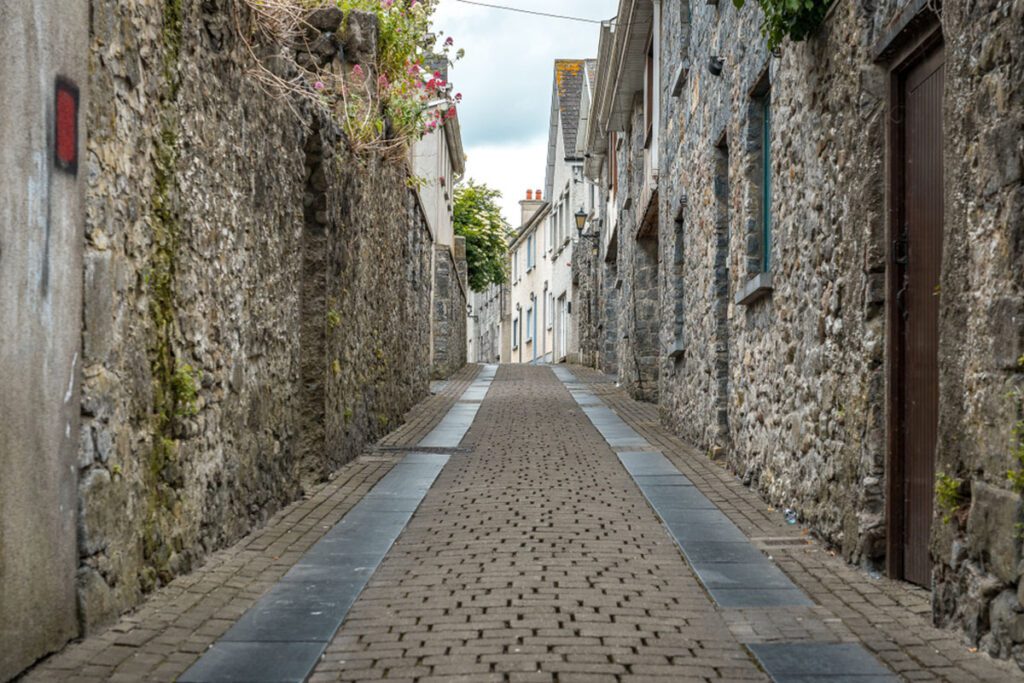
Natural Attractions
- Castlecomer Discovery Park – A family-friendly park with tree-top walks, ziplining, and a stunning lake.
- Brandon Hill – The highest point in Kilkenny, offering scenic hiking trails and breathtaking views.
- Dunmore Cave – A fascinating limestone cave with a rich history and guided tours.
- River Nore Walks – Peaceful riverside trails ideal for walking and cycling.
- Jenkinstown Park – A serene park with woodland walks and a picnic area.
Historical and Cultural Sites
- Kilkenny Castle – A magnificent 12th-century castle with beautifully landscaped gardens.
- St. Canice’s Cathedral and Round Tower – A Gothic cathedral with a climbable round tower for panoramic views.
- Rothe House and Garden – A well-preserved Tudor merchant’s house and museum.
- Jerpoint Abbey – A stunning 12th-century Cistercian abbey with intricate stone carvings.
- Kells Priory – Medieval monastic ruins surrounded by a charming countryside.
Arts and Crafts
- Kilkenny Design Centre – A hub for Irish crafts, offering unique gifts and souvenirs.
- Nicholas Mosse Pottery – Visit the workshop and gallery of this iconic Irish pottery brand.
- Blackstack Studio – A print studio showcasing contemporary art and designs.
- The National Craft Gallery – Ireland’s leading centre for contemporary crafts and design.
Unique Experiences
- Smithwick’s Experience Kilkenny – Learn the history of Ireland’s oldest ale with interactive tours and tastings.
- Medieval Mile Museum – Discover Kilkenny’s medieval history through engaging exhibits.
- Shankill Castle – A historic estate offering ghost tours, art exhibitions, and gardens.
- Kilfane Glen and Waterfall – A romantic 18th-century garden with a picturesque waterfall.
- The Tholsel – A historic building in Kilkenny City, originally used as a town hall.
Festivals and Events
- Kilkenny Arts Festival – An annual celebration of music, theatre, and visual arts.
- Cat Laughs Comedy Festival – A renowned comedy event featuring international acts.
- Savour Kilkenny – A food festival showcasing the best of Irish cuisine.
- Subtitle European Film Festival – A unique event celebrating subtitled European films.
Scenic Drives and Villages
- Inistioge – A picturesque village with charming scenery and a historic bridge.
- Thomastown – A bustling town with artisan shops and nearby Jerpoint Park.
- Graiguenamanagh – Known for its canals, river activities, and Tinnahinch Castle ruins.
- Callan – A town rich in history, including the birthplace of Edmund Rice.
- Bennettsbridge – Famous for its crafts and proximity to Nicholas Mosse Pottery.
Food and Drink
- Kilkenny’s Farmers Market – Fresh local produce, baked goods, and artisan products.
- Zuni Restaurant – A must-visit for contemporary Irish cuisine.
- Highbank Organic Orchards – Offering tours, tastings, and award-winning ciders.
- Brewery Corner – A craft beer pub featuring Kilkenny’s own beer brands.
County Kilkenny offers a mix of medieval charm, vibrant arts, and stunning landscapes, making it a top destination for all visitors.
Helpful Resources





